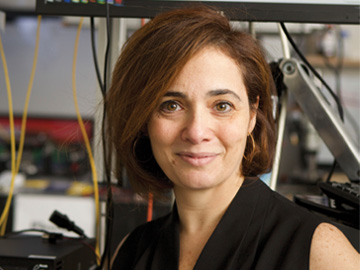
For anyone interested in optics and photonics, or in the future of energy, last year ended on a high note. In December, researchers at the US National Ignition Facility (NIF) announced the results of a controlled nuclear-fusion experiment that, for the first time outside of a star or a thermonuclear bomb, produced a net gain in energy. The accomplishment—achieved using the largest laser on the planet—raised new hopes for a long-term future of abundant, clean energy. But I would emphasize the “long term,” as even the most optimistic voices say that practical fusion energy is decades away.
A few months later, a very different suite of technologies was on display at the OFC Conference in San Diego, CA, USA, which wrapped up as this issue of OPN went to press. To me, a striking feature of this year’s OFC agenda was how it highlighted the rise of integrated photonics, nanophotonics and photonic chips. Session after session underscored advances in photonic integrated circuits, across applications ranging from compact lidar and quantum communications to energy-efficient optical interconnects for power-hungry data centers.
As with any great meeting, OFC showcased cutting-edge research. But we are also now seeing the fruits of that research: a vibrant ecosystem of startup and early-stage companies, large semiconductor manufacturers and others working to bring these advances in integrated photonics to the market.
At first glance, the achievements I’ve cited above—nuclear fusion driven by the world’s largest laser, and optical chips smaller than your thumbnail—seem to have little to do with one another. Beyond obvious differences of length scale and power, there’s the matter of time. Commercialization of integrated photonics, and its increasing penetration in data centers and data communications, is happening today. In contrast, notwithstanding NIF’s spectacular achievement, commercialization of fusion energy will come only after many years of hard work inventing the additional technology needed to make it feasible.
Yet I see some common threads between the two. One is the ability of both areas to advance our science, by spurring new research and funding and by offering fascinating questions to lure the best students to applied optics. Achieving the dream of laser-driven fusion energy will require advances in powerful, high-repetition-rate lasers, damage-resistant optics and a raft of other areas, all with great intellectual interest and potentially world-changing results. And in integrated photonics and nanophotonics, there remains—in Richard Feynman’s memorable phrase—“plenty of room at the bottom,” to further improve these optical technologies at the smallest length scales and to find new ways to marry them with microelectronics.
Both of these areas also have the potential to help science more generally, by linking it to the solution of big global challenges. As I noted in my first OPN President’s Message, in January, I believe that declining public trust in science and scientific evidence constitutes a key issue we must address in the coming years. Patient work on technologies that bring the fruits of science into people’s homes and that address the problems of society at large can help to build such trust, and tie science closely to a better life for all—in both the short and long term.
—Michal Lipson,
Optica President
View Spanish, Chinese, French, German and Japanese translations of this message:

